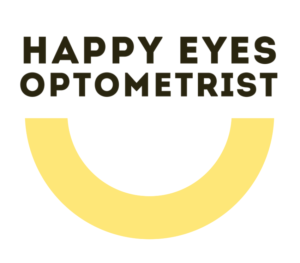Clear answers for growing eyes
Myopia makes distant objects look blurry while near tasks (like reading or screens) stay clear. It commonly starts in childhood and can progress through the teenage years. Early diagnosis and management help protect vision now—and eye health for life.
Who is affected?
- Children and teenagers — most new cases begin during school years
- Students & heavy screen users — long periods of close work can contribute
- Those with a family history — if one or both parents are myopic, risk is higher
- Low outdoor time — less daylight exposure is linked with faster progression
Even if your child “sees fine,” myopia can progress silently. Regular eye tests are essential.
Why myopia control matters
As prescriptions increase, the eye grows longer. Higher (stronger) myopia isn’t just about thicker lenses—it’s associated with a greater lifetime risk of certain eye diseases. Slowing progression early helps keep long-term risk lower.
Risks linked with high myopia
- Retinal detachment — stretched retina is more vulnerable
- Myopic maculopathy / degeneration — damage to central vision
- Glaucoma — higher risk compared to non-myopic eyes
- Earlier cataract — can develop sooner and progress faster
- Posterior staphyloma — structural stretching at the back of the eye
If your child’s prescription is increasing quickly, a proactive plan is important.
How Happy Eyes can help
We tailor care to each child’s age, lifestyle, and prescription. Options may include:
- Orthokeratology (Ortho-K) — custom night-time lenses gently reshape the cornea; clear daytime vision without daytime lenses and proven myopia control benefits.
- Soft myopia-control contact lenses (MiSight) — designed to slow eye growth while providing clear vision.
- Myopia-control glasses(Essilor Stellest) — specialised lens designs to help reduce progression.
- Low-dose atropine therapy — nightly eye drops supported by evidence for progression control.
- Lifestyle guidance — outdoor time (aim ~2 hours/day), smart screen habits (20-20-20 rule), good lighting, and working distances.
We monitor changes over time with precise measurements and imaging, adjusting the plan as your child grows.
What to expect at your visit
- Comprehensive eye test — vision, prescription, and binocular function
- Corneal topography (when indicated) — maps corneal shape for contact lens or Ortho-K suitability
- Discussion & plan — we explain options clearly and agree on a tailored strategy
- Follow-up schedule — regular reviews to track prescription, vision, and eye health
Signs your child may need an assessment
- Squinting or sitting close to the TV/board
- Headaches or tired eyes after near work
- Complaints of blurry distance vision
- Prescription increasing year-on-year
Take action early
Myopia tends to progress fastest during school years. The sooner we start, the better the chance of slowing it down and protecting long-term eye health.
